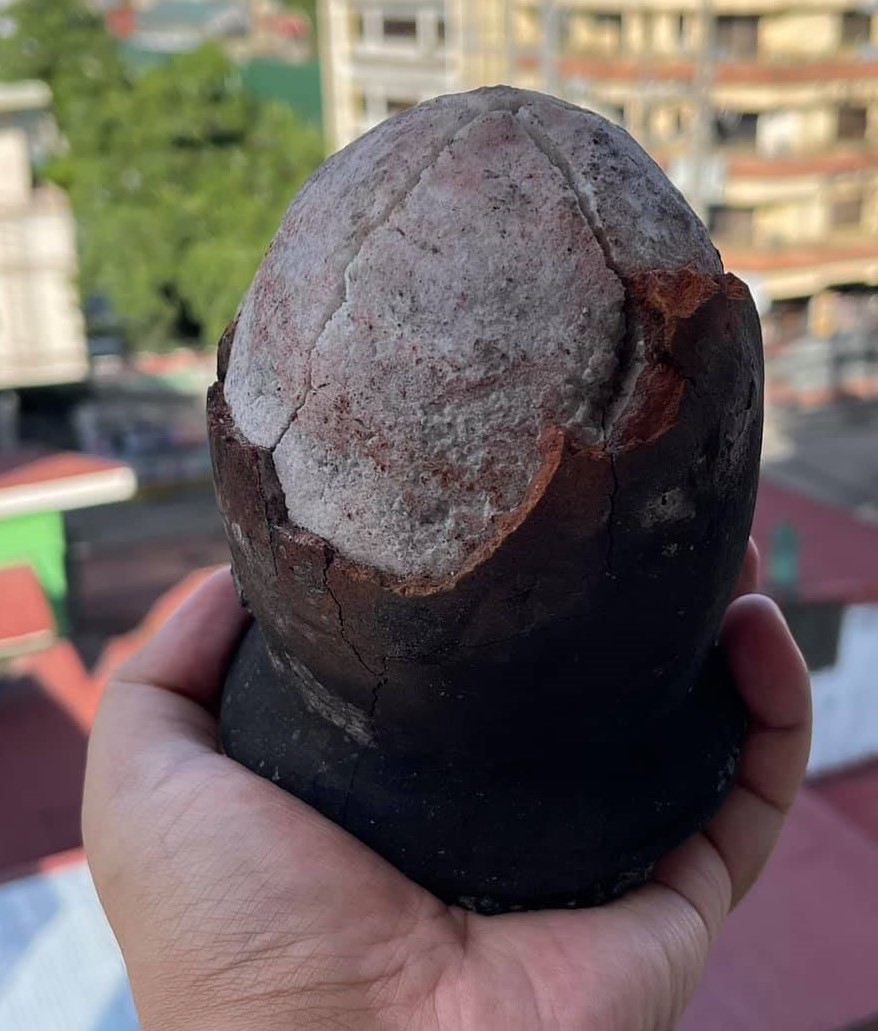
The dinosaur-egg-like “Asin Tibuok” is a rare Filipino artisanal sea salt from my home province Bohol that was featured in an episode of “Replacing Chef Chico” in Netflix.
“Replacing Chef Chico” is a series that follows Ella (Alessandra de Rossi), a sous-chef in a Filipino fine dining restaurant who became the head chef when the original head chef (Sam Milby) fell into a coma, who along with the newly hired consultant (Piolo Pascual) is tasked in keeping the restaurant from closing down.
The series skillfully combines human drama with the culinary arts where the meals in each one of the eight episodes are customized food offerings related to the stories of the guests.
In Episode 6, an influencer couple KaelaWin (my nephew Joao Constancia and Yukii Takahashi) celebrated their third year anniversary in Hain through three versions of laing, where one episode used the Asin Tibuok as an ingredient.
From Albuquerque, Bohol, Asin Tibuok appears like a dinosaur’s egg and is actually one of the rarest salts in the world. It is made using a very labor-intensive, pre-Hispanic traditional method of production that takes months of preparation and requires meticulous care and vigilance.
Coconut husks are soaked in seawater for several months absorbing sea minerals.
The husks are then chopped into small pieces and sun dried. The husks are slowly burnt in a highly controlled manner for several days with local hard woods, creating a coconut charcoal ash combination.
The activated charcoal ashes are then used to filter seawater which is poured and roasted in clay pots slowly until salt forms into a solid dome.
As the saltmaker keeps a close eye on evaporation, both fire and salt cannot be left alone since the fire and heat must be controlled so the clay pots do not break or get too hot. It takes the entire evening for the salt to cool so that it can be handled.
The asin tibook may be may be powderized, cracked, grated or broken into big chunks. The salt is slightly sweet with smoky and fruity undertones.
Due to the difficulty and length of time it takes to manufacture them, the Asin Tibuok is on the brink of extinction as there are few families left in Bohol who have dedicated in preserving this age-old craft.
Like the fate of the dinosaurs, the asin industry in Las Pinas City in Metro Manila is also considered extinct. Until the mid-1990s, I remember seeing salt pyramids lined up along the salt beds on my way home to Las Piñas.
Las Piñas City was once dubbed the “Salt bed of the Philippines,” concentrated in Barangay Pulanglupa where I now reside.
In the 18th century, salt-making technology using solar dry beds was introduced to Las Piñas, then a known fishing village. Over time, hundreds of hectares surrounding the old town were converted into salt beds known as “irasan.”
Later, clay tiles or gibak were brought down from as far away as Vigan to line the salt beds. This prevented the salt from coming into contact with the ground and allowed the salt to become white.
Solar evaporation method is the oldest method of salt production. This is ideal in warm climates as evaporation rates exceed precipitation rates. This method retains ions such as chloride, sodium, sulfate, magnesium, calcium, and potassium, which are abundant in salt water.
During harvest time, there were many small pyramids of white crystals scattered in the city that produced 40-50 kilos of rock salt per day.
Unfortunately, the salt beds became casualties of urbanization.
The need for more affordable housing due to increasing population resulted to the conversion of many of the salt beds into residential subdivisions while others were converted into fishponds and commercial properties.
Pollution from industrial and domestic sewerage draining into Manila Bay destroyed the pristine waters that had been the salt industry’s primary ingredient.
Land developments such as bay area reclamation and Coastal Road construction disrupted salt production.
The weakening of the salt industry is also partly attributed to the passage of RA 8172 or the Act for Salt Iodization Nationwide (ASIN) law passed in 1995, which requires all producers of food-grade salt to iodize the salt that they produce, manufacture, import, trade or distribute for human and animal consumption.
Salt imported from other countries like China and India were also offered at lower prices.
The Netflix feature on the Asin Tibuok serves as a call to preserve this salt not only as a premium culinary ingredient but also as a symbol of cultural heritage and sustainable craftsmanship of fellow Boholanos. Bohol is the home province of the Gorechos.
(Peyups is the moniker of University of the Philippines. Atty. Dennis R. Gorecho heads the seafarers’ division of the Sapalo Velez Bundang Bulilan law offices. For comments, e-mail info@sapalovelez.com, or call 0917-5025808 or 0908-8665786.)
RELATED STORIES
Search for fireflies in Ifugao rice terraces
Walking barefoot during Traslacion
Honoring Rizal’s literature and social activism through movies, plays and TV series
IKOT jeep phaseout highlighted in UP Lantern Parade
To teach law in the grand manner
Bohol welcomes first cruise ship for 2024
